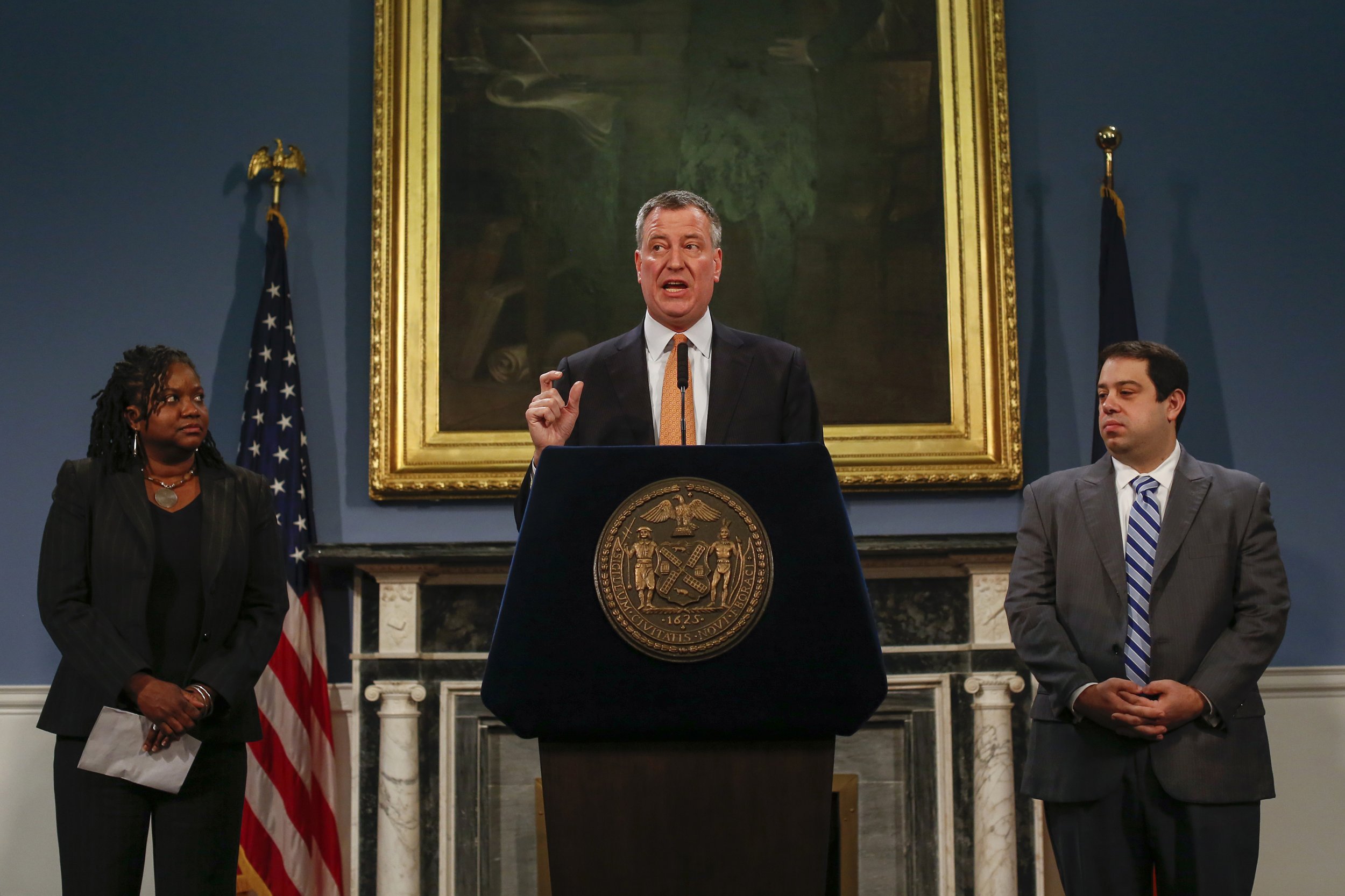
It's a tale of two terrible choices.
New York City Mayor Bill de Blasio, who rose to power on a populist "tale of two cities" platform that promised to lessen the widening divide between Gotham's rich and poor, is now contending with a big political problem in his future backyard – and there's no good way he can solve it without looking hypocritical.
That problem: a forthcoming garbage-shipping plant called the East 91st Street Marine Transfer Station. The construction was greenlighted in 2005 as part of the Bloomberg-backed solid waste management plan – a key tenet of which was spreading garbage facilities across both rich and poor neighborhoods in New York. The station, which will take in trash from garbage trucks and then ship it by boat for processing, will be located at the northeast edge of the Upper East Side – which, as a whole, is arguably New York's richest neighborhood. The station, which will be located on the site of a long defunct trash facility, is also three blocks from Gracie Mansion, the historical New York City mayoral residence where de Blasio, presently a Brooklyn resident, says he plans to move.
Though sanitation issues rarely drive voters to the polls, the station unexpectedly became a hot button issue in the race for City Hall. Supporters of the station maintain that its placement in a predominately white, wealthy area encourages "borough equity" in trash disposal – the notion that all neighborhoods need to pay their fair share in playing host to undesirable facilities, rather than dumping them on poor neighborhoods populated by people of color. Opponents of the station counter that this talk of borough equity is not true in this case. Though the Upper East Side as a whole is rich, they say, the plant will be located in the middle class sub-neighborhood of Yorkville – and across the street from 1,000 public housing units. Entry to the station will also bisect a popular recreation center which gives thousands of underprivileged youth free athletic programming every year. Geographically, the plant – which would bring hundreds of diesel-burning trucks to the area daily – is within close proximity to East Harlem, a neighborhood which suffers from one of the highest rates of pediatric asthma nationwide.
Hence the rub: if de Blasio does not allow the transfer station, he will appear to behave in a "Not in My Backyard (NIMBY)" manner – a proponent of borough equity and helping the poor so long as it doesn't stink up his own elite backyard. If he does allow the transfer station, he will be seen as trying to save face to the detriment of the poor – for whom he promised to fight.
"This is a lose-lose," Hank Sheinkopf, a veteran New York City political operative, tells Newsweek. "Someone's going to be angry no matter what he does."
During the 2013 primary, voting precincts in Yorkville and surrounding areas overwhelmingly supported Bill Thompson – who was maybe the most vocal Democratic opponent of the transfer station. In the mayor's race, de Blasio's opponent and vocal MTS critic Republican Joe Lhota took large chunks of the Upper East Side, including much of Yorkville – mainly because he promised to stop the plant. The MTS-spurred tensions remain today between the neighborhood and de Blasio. Some residents even accuse him of "trying to get us back" by allegedly failing to plow snow, according to The New York Post. But supporters of the MTS comprise the mayor's major allies in City Council, who tout the MTS as an integral step toward citywide environmental justice.
Sheinkopf says that maybe the best of the bad alternatives is for de Blasio to stick to his guns, concluding: "He's not going to get those Upper East Side votes anyway. The greater loss for him is losing the progressives on the Council. The best move for him, politically, is to say 'yes' to the marine transfer station."
Douglas Muzzio, a politics expert at Baruch College, predicts that de Blasio will likely stick with the transfer station – and probably won't even initiate a task force to revisit the issue. The rub, of course, is that Upper East Siders comprise a very powerful, very well funded voting contingent and have "memory and the ability to organize," he says.
The "one and half percent," Muzzio says, "are really angry about this issue.
Alexis Grenell, a political consultant in NYC, agreed with the aforementioned difficulties for de Blasio, but did not feel this would be irreparably damaging to his reputation.
"It's up to the Mayor to show consideration for the community, but explain the cost benefit analysis of his decision (whatever it may be) and then implement it. This is not a make or break issue," she tells Newsweek in an e-mail. "He'll have three years to patch up any wounds."
De Blasio's office did not reply to Newsweek's repeated requests for comment.Though he had voted for the station when he was in city council, he was ambivalent about it early on in the mayor's race, joining the pack of notable opponents – including one time frontrunner Christine Quinn – as it became more and more of a flash point in the election. He has since told the New York Times that he and his family still plan on moving into Gracie, but will "not walk away from the five-borough plan."
The marine transfer station, slated for completion in 2016, is moving forward on schedule with minor, snow-based delays, city officials tell Newsweek. The City does not expect two ongoing federal lawsuits – which effectively challenge the U.S. Army Corps of Engineers' permitting of the project – to hold up construction.